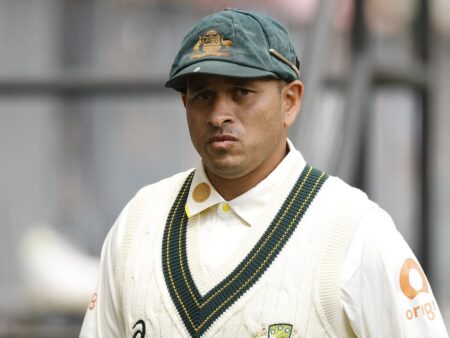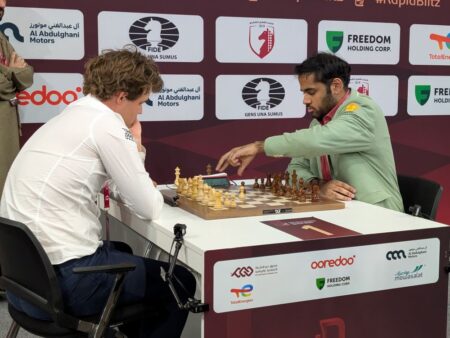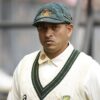The stage is set for a thrilling showdown as India and New Zealand prepare to clash in the final of the 2025 ICC Champions Trophy in Dubai this Sunday. India has demonstrated dominant form throughout the tournament, securing victories in all matches leading up to this final. Their strengths are well-rounded, particularly their exceptional slow bowlers who are perfectly suited to the conditions. Furthermore, India benefits from familiarity, having played all their tournament games at the Dubai International Stadium. New Zealand, however, has also displayed formidable performance, with convincing wins over strong teams like Pakistan and South Africa.
Both teams possess powerful batting lineups, raising the question of which player will emerge as the game-changer. Will the coin toss significantly influence the match’s outcome? What critical matchups should we anticipate? Between Henry and Shami, who will be more effective with the new ball? And does India’s strong spin attack give them a distinct advantage?
Let’s delve deeper into these key talking points as we look ahead to this highly anticipated final.
New Zealand’s Historical Edge in ICC Events
Historically, New Zealand holds a stronger record against India in ICC limited-overs world tournaments, with 9 wins to India’s 6. In knockout matches, New Zealand’s advantage is even clearer at 3-1, including the 2021 WTC final. However, recent encounters have favored India, winning their last three ICC meetings – a league stage match in the 2023 World Cup in Dharamsala, the semi-final in Mumbai, and a group stage game in this current tournament in Dubai.
Notably, New Zealand defeated India in the final of the second edition of the ICC Champions Trophy in Nairobi in 2000.
The Toss Advantage in Dubai
The toss is expected to be a significant factor in Sunday’s final in Dubai. Despite the absence of dew in the evenings during the tournament, batting second offers a clear advantage at this venue. India has capitalized on this, winning three out of four matches in Dubai while chasing, all with considerable ease. The average first innings score in Dubai during the tournament is just 245, with Australia’s 264 in the semi-final being the highest.
India’s Superior Spin Attack
India’s spin quartet, featuring Varun Chakravarthy, Ravindra Jadeja, Axar Patel, and Kuldeep Yadav, has been the most effective spin bowling unit in the tournament. They boast the best bowling average (28.28) and strike rate (35.8). In their group match against New Zealand, they claimed nine wickets, highlighted by Varun Chakravarthy’s match-winning spell of 5/42. Chakravarthy has been in exceptional form in 2025, taking 22 wickets in eight white-ball matches for India at an average of just 12.86.
However, New Zealand’s spin bowlers are also performing well. Mitchell Santner and Michael Bracewell have been effective in the middle overs. Santner has taken seven wickets with an economy rate of 4.85, while Bracewell has six wickets at a 4.43 economy. Rachin Ravindra has also been economical, and Glenn Phillips has contributed with crucial wickets. Dubai’s conditions have favored spin, and the Indian spinners have exploited this effectively.
Despite playing a majority of their matches on batting-friendly pitches in Pakistan, New Zealand’s spinners have also produced impressive figures, demonstrating their skill. The Kiwi spinners rank second among all teams in the tournament in terms of wickets taken, average, and strike rate.
Henry and Shami: Key New Ball Bowlers
Matt Henry is currently the tournament’s leading wicket-taker with 10 wickets in four matches, averaging 16.7 with a strike rate of 18.8. He has consistently taken wickets in the powerplay. Henry’s overall ODI strike rate of 28.6 is among the best for fast bowlers in ODI history (minimum 150 wickets).
Mohammed Shami also boasts an outstanding ODI record, with an even better strike rate of 25.7, the best in ODI history. He has an exceptional record in ICC ODI tournaments, with 63 wickets in just 22 matches, averaging 14.3 with a strike rate of 16.8, including four 4-wicket hauls and five 5-wicket hauls. In this Champions Trophy, he is the second-highest wicket-taker with eight wickets, averaging 19.87 with an economy of 4.96. Shami has also taken three powerplay wickets at an economy of 4.69.
Batting Powerhouse Clash
India possesses the most prolific batting lineup in the tournament. Rohit Sharma is expected to attack early in the innings, while Virat Kohli will be crucial in the middle overs, especially in run chases. Shubman Gill has been a top ODI run-scorer since 2022, and KL Rahul and Hardik Pandya are adept finishers.
However, Shreyas Iyer could be India’s X-factor with the bat in the final. He has been in excellent form since his ODI return, scoring 376 runs in seven innings in 2025, including four fifties, at an average of 53.7 and a strike rate of 96.2. Iyer is particularly strong against spin bowling.
Interestingly, one area where Indian batters have been less dominant in this tournament is their scoring rate against spin, with a combined strike rate of just 80.5. This might be influenced by the Dubai conditions rather than a lack of intent.
New Zealand also has a formidable batting lineup. Their top 6 batsmen have a higher combined batting average than India’s in this tournament. New Zealand leads in centuries scored (5), with Rachin Ravindra contributing two. Ravindra, a stylish left-hander, is key for New Zealand’s top order and is their best player of spin. Tom Latham, Kane Williamson, and Will Young are the other centurions for New Zealand.










